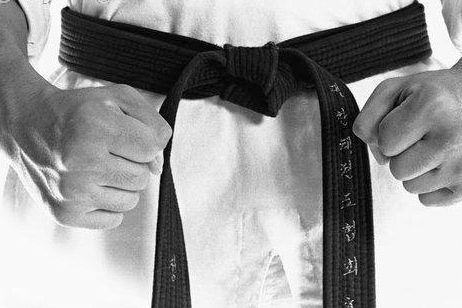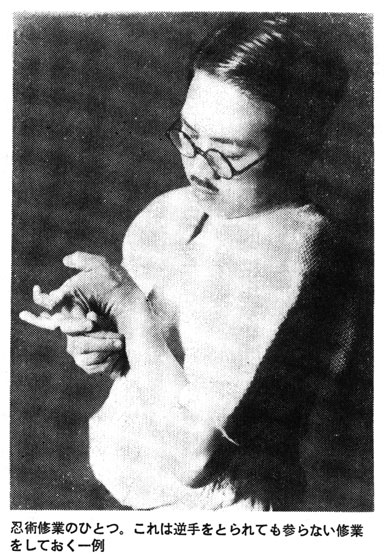 The physical act of kicking is something that never ceases to fascinate people, and it tends to be a reason to why many teenagers start Martial Arts in general.
The physical act of kicking is something that never ceases to fascinate people, and it tends to be a reason to why many teenagers start Martial Arts in general.
Therefore I thought it would be fun to explore this a little.
Ever since the evolution of man, our feet have been quite important. They take us from one place to another, from our home (cave) to food (hunting), which is vital if we need to survive. The feet are therefore, first and foremost a tool of transportation.
So how did they become weapons?
Traditionally, the hands have always been used to attack and defend, preferably while holding a tool, such as a stick or stone, which seems like a good idea since he hands are often too important and fragile to use alone for fighting. We need them for other things too, and they would not be of much use if they were broken. That’s one of the reasons to why fist-fighters of today use protection (Boxing/MMA etc).
And if they don’t use protection, then they harden their hands in some way (Kung-fu, Karate etc).
The bottom line is: The hands are not naturally made for physical fighting.
They just aren’t. They are made for tasks that require dexterity; like picking berries, picking your nose, picking locks and sending text messages. Maybe you shouldn’t do those things at the same time (might be hard to explain down at the station), but you get the point.
So if man doesn’t want to hurt his delicate hands, doesn’t want to harden them, doesn’t want protection, and doesn’t want to use a tool of some sort, what other body part is a good weapon?
What body part is hard, big and easy to use?
Well, the leg is hard and big, and it’s… somewhat easy to use. At least for what it’s made for: walking, running and climbing – transportation. Kicking, on the other hand, is a skill that requires a little more training to be used effectively.
Say we are cave men, and we decide that we want to use our feet for fighting. We now run into some trouble. Our first problem is: How should we do? Is kicking natural? Well, kicking low to the front, to the side, stomping down and “horse kicking” low to the back are more or less natural. At least that’s what I think. Everyone can do these four kicks without instruction. They are built in, so to speak. And they are quite safe, since they don’t expose much of our groin, like higher kicks would do.
Use other kicks, and you need to think, analyze, observe and practice. That takes time. And that’s problem number one.
Problem number two is that we need to compromise our stability when we use (high) kicks. And stability is a precious thing when you need to survive. Just look at somebody who is not trained in fighting and is forced to fight. They will instinctively use a crouching position, and lean forward, protecting the groin. Subconsciously their brain told them “get down, balance is important now”.
When we kick, half of our “base” is lifted away (and we haven’ even covered jumping kicks yet). It is a “going against nature”- position that needs practice. Practice takes time.
So, what do these two problems have in common? The answer is: They both take time. If you want to specialize in kicks, you need time. Time is precious if you are a cave man. You might just need to abandon other things, in order to specialize at kicking.
And that is just what happened.
Think Taekwondo (Korea), Savate (France), Capoeira (Brazil) and Northern Kung-fu (China). These are Martial Arts, all from different parts of the world, which have taken kicks to a whole new level, by specializing in them. They are no masters of joint locks, strikes, punches, throws or ground work.
They chose kicks.
In other places kicks have been abandoned totally. For example, modern Judo uses no kicks. And in England kicks were considered highly unsportsmanlike during the early days of Boxing, which led to today’s Boxing having no kicks.
Unsportsmanlike or not, kicks are effective (when used right). Anyone who has been on either the giving or receiving end of a kick knows that. You could even say that being kicked is kind of humiliating. “Hey, the legs are supposed to be down, not up here in my face.” The opponent is not only fighting me with half his balance taken away, and his groin exposed, he is also making me eat his sweaty sole, which is supposed to be about 180 centimeters below my face.
One person that was more than humiliated by a kick (he was actually killed) is mentioned in the Ancient National Chronicles of Japan, the Nihon Shoki:
Recorded in the Nihon Shoki is an early fighting style called Sumai (meaning struggle), and it states that the style existed as early as 23 B.C. The story is of a man named Nomi-no-Sukune of Izumo who defeated Tajima-no-Kehaya on a beach in Shimane Prefecture by first fracturing Kehaya’s ribs with a side kick, throwing him to the ground and then trampling him, crushing his pelvis with a stomp, and ultimately killing him. This was supposedly witnessed by the Emperor Suinin, and is therefore recorded in the Nihon Shoki, the National Chronicles of Japan.
As you see, kicks were useful in combat even back then.
But still their effectiveness is debated today.
Well, I think it all depends on what your goal is. For example – in Self-defense, don’t practice any other kicks than the four, low, basic, natural ones. You will just waste time if you do. You need that time to practice other things. If your goal is physical fitness, kicks are great, especially the high ones. If your goal is something else, then you just change your training according to that goal.
The problem occurs when you train your kicks for the wrong purpose. Like practicing Taekwondo kicks for Self-defense. Or Self-defense kicks for Kickboxing. Or Capoeira kicks for anything besides Capoeira. The philosophies, tactics, rules and regulations are so different between areas that you can’t use the same kicks everywhere.
The result is that people sometimes debate the general effectiveness of kicks.
That couldn’t be further from the truth. If the right kick is used in the right place at the right time… by the right kicker, then no other human bodily weapon is more dangerous.
If you don’t believe me, just ask the Japanese guy who got his butt kicked in the Nihon Shoki.
Ouch.
____________
PS. While we are on the subject of kicks, to all Karate people: “Geri” does not mean kick in Japanese. It actually means diarrhea. “Keri” means kick. You just say “-geri” when it comes after another word, like mae/mawashi/yoko etc.
Please don’t confuse these two!



2 Comments